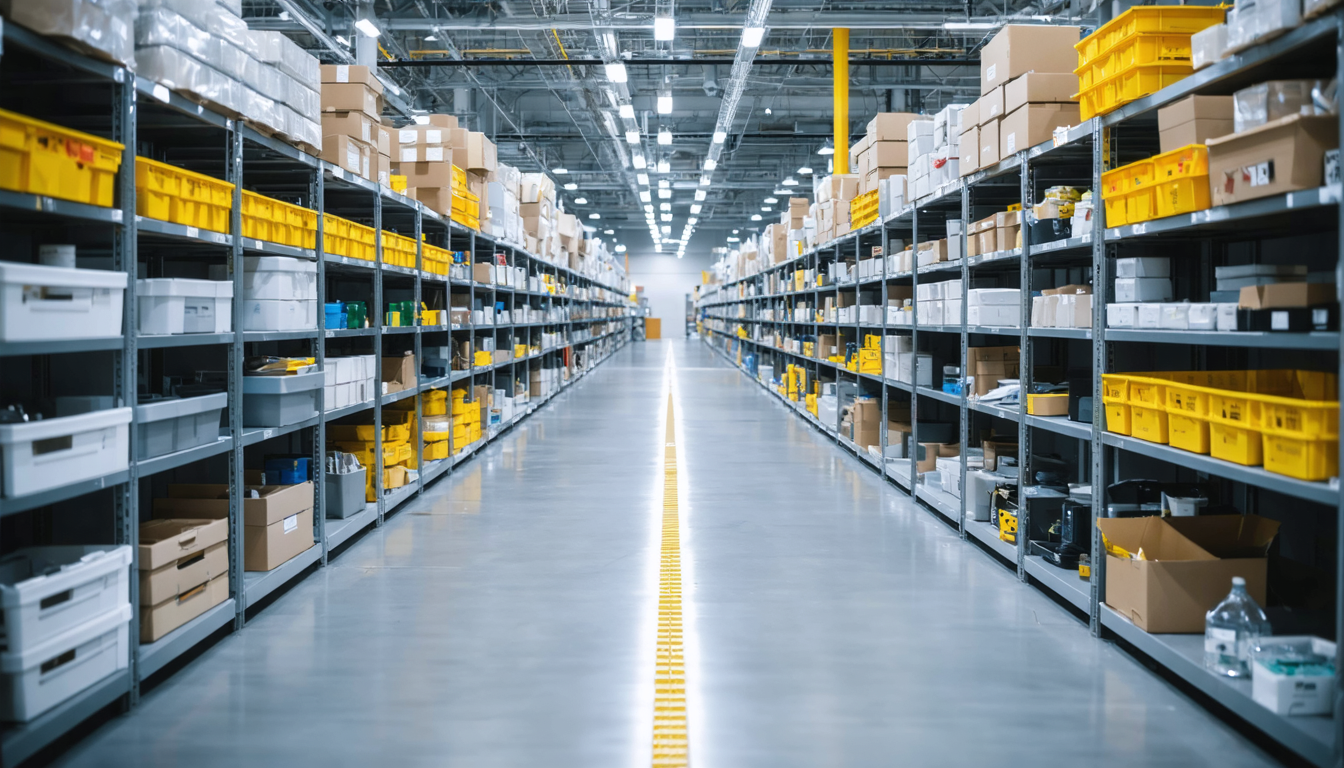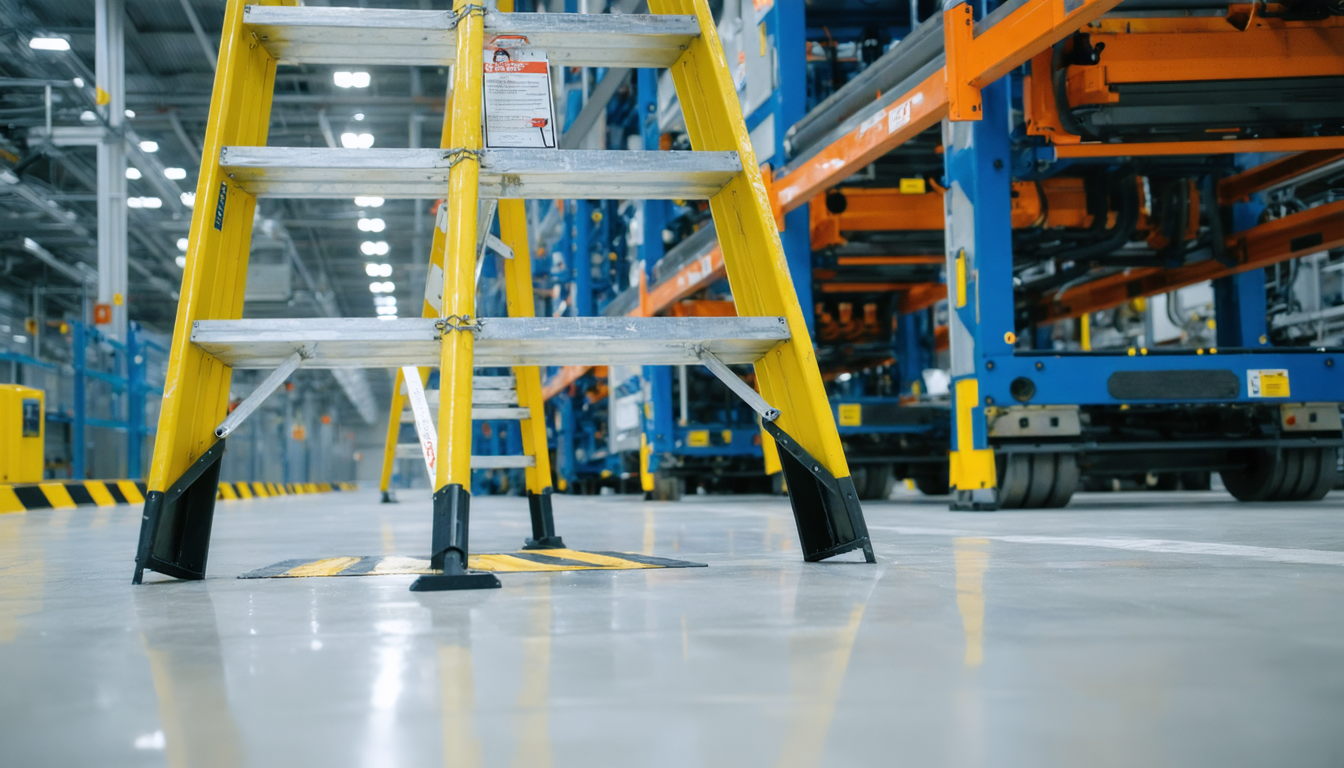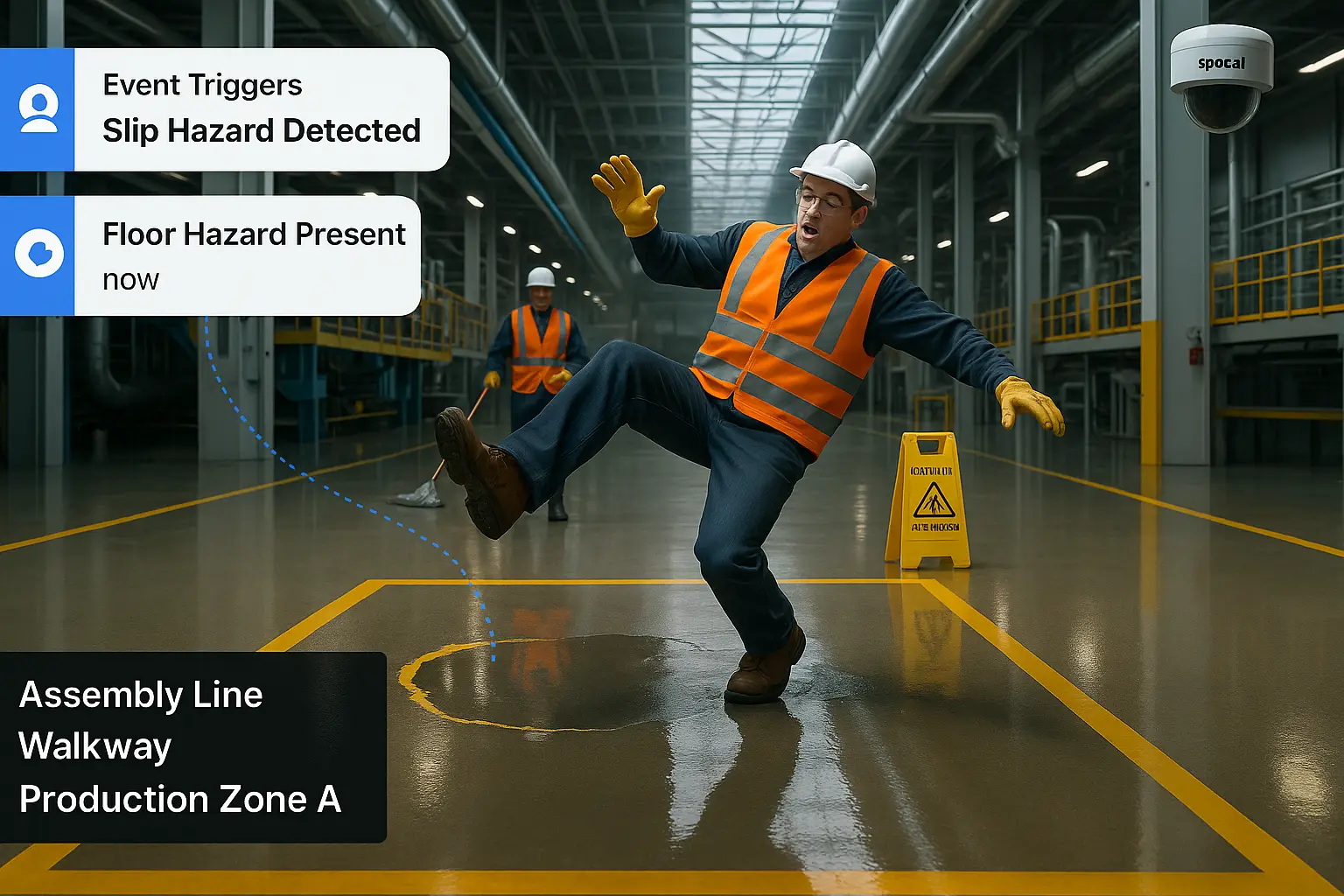Each year, slips, trips, and falls (STF) remain one of the top incidents driving injuries and disruption in the manufacturing sector. In fact, manufacturing accounts for 19.2% of all non-fatal workplace injuries in the United States, the highest of any industry (Source: ElectroIQ Workplace Safety Statistics, 2025). Beyond the personal toll, the economic impact is real—falls on the same level alone account for $10.5 billion in direct costs annually (Source: Liberty Mutual Workplace Safety Index, 2025).
But here’s the opportunity: Most of these incidents—whether it’s a slip on an oily floor, a fall from a ladder, or a trip over misplaced materials—are preventable. By blending proven safety protocols with modern technology, especially AI-powered video intelligence, manufacturing leaders can shift from reacting to accidents to stopping them before they start.
This guide breaks down the true costs, root causes, and provides a clear framework for moving from a reactive to a proactive safety model using modern technology.
Why Slips, Trips, and Falls Are a Major Cost Driver in Manufacturing
STF injuries aren’t just a line item on the safety report. They hit hard across the entire operation. Manufacturing outpaces the national average for nonfatal injury rates, clocking in at 3.3 cases per 100 full-time workers compared to 2.4 across all industries (Source: BLS CFOI 2023). But the consequences run deeper than just the numbers.
Manufacturers face unique risks: high-paced workflows, heavy machinery, and ever-changing personnel—from seasoned operators to temporary staff. STF incidents trigger production slowdowns, open the door to OSHA penalties, and can even lead to repeat violations if root causes aren’t tackled.
The Top 5 Reasons for Slips, Trips, and Falls in Manufacturing—and Proactive Prevention
Understanding why STF accidents happen is the first step to stopping them. Let’s break down the five leading causes in manufacturing, the traditional ways teams address them, and how AI video intelligence can take your safety program further.
1. Slippery or Contaminated Floors
The Hazard:
During a busy shift, a line worker crosses an area near a CNC machine where coolant has pooled on the floor. The liquid is clear, and in the rush, the worker doesn’t notice it. One step later, they lose traction and fall, suffering a fractured elbow.
Traditional Prevention:
Rigorous housekeeping schedules for cleaning up spills.
Use of “Wet Floor” signs and absorbent mats.
Training on immediate spill reporting.
How AI Amplifies Prevention:
Video analytics can detect erratic movement patterns—like slips and sudden falls—in real time (“Possible Fall” events), alerting safety staff instantly. Over time, flagged incidents help identify high-risk zones and times, enabling smarter deployment of cleaning resources and proactive hazard elimination.
2. Poor Housekeeping and Obstructed Walkways

The Hazard:
A maintenance tech trips over a stray pallet left in a main aisle, leading to a sprained hip and time away from work. In manufacturing, clutter can accumulate fast—tools, packaging, or scrap.
Traditional Prevention:
Daily 5S walks and housekeeping checklists.
Designated storage areas for materials and tools.
Supervisor spot checks and corrective action logs.
How AI Amplifies Prevention:
Crowding and obstruction events can be flagged by video analytics, alerting teams when walkways start to fill up or get blocked. Reviewing flagged footage helps teams pinpoint persistent trouble spots and reinforce standards where needed.
3. Unsafe Use of Ladders, Platforms, and Elevation Changes

The Hazard:
A worker uses a step ladder set on uneven ground to access an overhead unit. The ladder slips, causing a fall and leg fractures. Falls from “lower levels”—under six feet—are common and often underestimated in manufacturing.
Traditional Prevention:
Ladder and scaffold inspections.
Training on proper setup and use.
Requiring spotters for elevated work.
How AI Amplifies Prevention:
Video intelligence can detect “Possible Fall” events as they happen, not just after the fact. Reviewing these incidents allows safety leaders to analyze circumstances—was the ladder placed correctly, were protocols followed—and to retrain teams accordingly.
4. Inadequate Machine Guarding and Proximity to Moving Equipment
The Hazard:
While clearing a jam, an operator slips and grabs an unguarded press, resulting in a fingertip amputation. The high rate of amputations in manufacturing STFs underscores the need for robust guarding and separation.
Traditional Prevention:
Machine guarding audits and lockout/tagout training.
Regular maintenance and inspection of guards.
Physical barriers or floor markings around hazard zones.
How AI Amplifies Prevention:
AI can alert when people enter designated no-go zones around machinery (“Person Enters No-go Zones”) or when unsafe movement occurs near critical equipment (“Running” events). These insights drive targeted interventions—whether it’s adding a guard, improving signage, or revising procedures.
5. Failure to Use Proper PPE and Footwear
The Hazard:
A team member enters the production floor in worn-out sneakers instead of required slip-resistant boots. During a routine task, he slips on oil and falls, bruising his hip and wrist. Inconsistent PPE compliance is a recurring theme in STF incidents.
Traditional Prevention:
PPE policy enforcement and signage.
Regular spot checks or “boot audits.”
Safety training on footwear and PPE requirements.
How AI Amplifies Prevention:
Video analytics can detect missing personal protective equipment (“Missing PPE” events), instantly notifying supervisors when someone enters a production zone without the right gear. This enables immediate coaching, better compliance, and a culture of accountability.
Integrating a Modern AI Camera System: From NVR to AI Insights in Manufacturing
Feature | Traditional NVR System | Modern AI Video Platform |
|---|---|---|
Camera Compatibility | Requires specific models | Works with existing POE/legacy cameras |
Storage | On-premise hardware | Secure, cloud-native, scalable |
Maintenance | Frequent, local | Minimal, remote updates |
User Access | Limited seats, siloed | Unlimited users, unified dashboard |
Video Review | Manual search, slow | AI-powered search & event detection |
Actionable Insights | Passive footage | Real-time alerts (falls, running, PPE) |
A cloud-based AI camera system bridges your old cameras to a secure dashboard—no more maintaining bulky servers. It automates incident detection, reduces investigation time, and empowers unlimited users to monitor safety, all from one place.
What makes the difference? The AI analysis layer. It surfaces critical events—like possible falls, running, or missing PPE—so your team can respond proactively, not just review footage after an incident.
Practical Steps for Manufacturing Safety Teams
Assess Existing Camera Coverage: Map your high-risk zones—production lines, walkways, loading docks—and check current camera placement.
Prioritize Integration: Choose platforms that work with your current cameras to avoid unnecessary replacements.
Align with Safety Programs: Integrate video insights with your OSHA compliance, incident reporting, and training efforts.
Involve IT and Safety Together: Collaboration ensures the system supports operational and compliance goals without introducing complexity.
By combining AI-powered video analytics with your traditional safety playbook, you can cut investigation times, spot trends, and prevent the next incident—before it happens.
Transform Manufacturing Safety—Book a Safety Consultation
Every slip, trip, or fall is a chance to improve—not just to respond. By integrating modern AI-driven video analytics with your existing protocols, you can dramatically reduce risk, speed up investigations, and create a safer, more productive workplace for every team member.
Ready to see how AI video analytics can empower your team and help prevent the next incident? Book a safety consultation with Spot AI’s experts and get tailored, actionable guidance for your facility.
Frequently asked questions
What are the most common causes of slips, trips, and falls in manufacturing?
The top causes include slippery or contaminated floors, poor housekeeping and obstructed walkways, unsafe use of ladders or platforms, inadequate machine guarding, and inconsistent use of PPE or slip-resistant footwear (Source: OSHA Data, 2025; ElectroIQ Workplace Safety Statistics, 2025).
How does safety technology support compliance with OSHA requirements?
Modern AI camera systems can help enforce OSHA standards for housekeeping, walking-working surfaces, PPE, and machine guarding by detecting hazards in real time and documenting compliance efforts. This supports both proactive prevention and faster, more accurate incident investigations (Source: J.J. Keller Compliance Network, 2025).
Can manufacturing facilities use their existing cameras for AI video analytics?
Yes, leading AI video platforms are designed to work with existing POE and legacy cameras. This avoids unnecessary hardware replacements and enables a smooth upgrade from passive recording to proactive safety monitoring.
What are best practices for integrating safety technology with our current protocols?
Start with a risk assessment to identify priority areas. Involve safety, operations, and IT teams early to ensure alignment with compliance and operational goals. Pilot the system in one area, review the results, then expand based on data-driven insights.
How do AI analytics help with incident investigation and prevention?
AI-powered video platforms automatically flag possible falls, running, and missing PPE—making it easy to review incidents, understand root causes, and speed up investigations. These insights inform targeted training and operational tweaks that prevent future accidents.
How can safety technology help reduce stress for safety managers?
AI-driven analytics automate hazard detection and reporting, reducing the burden of manual monitoring and freeing safety managers to focus on proactive planning and team development, instead of constantly reacting to incidents.
About the author
Joshua Foster
IT Systems Engineer, Spot AI
Joshua Foster is an IT Systems Engineer at Spot AI, where he focuses on designing and securing scalable enterprise networks, managing cloud-integrated infrastructure, and automating system workflows to enhance operational efficiency. He is passionate about cross-functional collaboration and takes pride in delivering robust technical solutions that empower both the Spot AI team and its customers.






















.png)
.png)
.png)